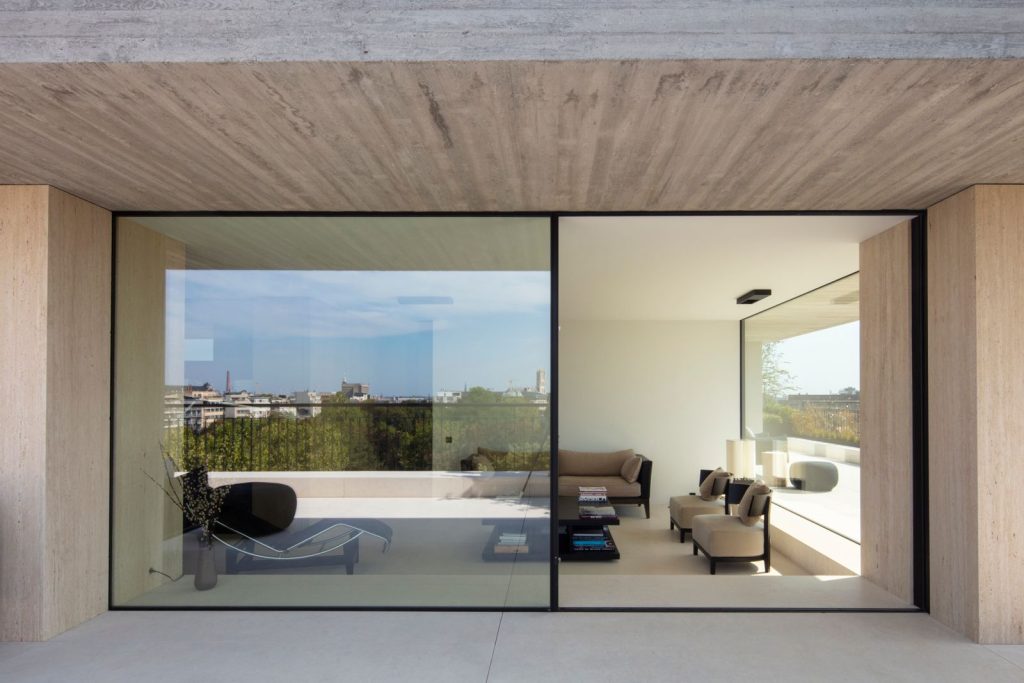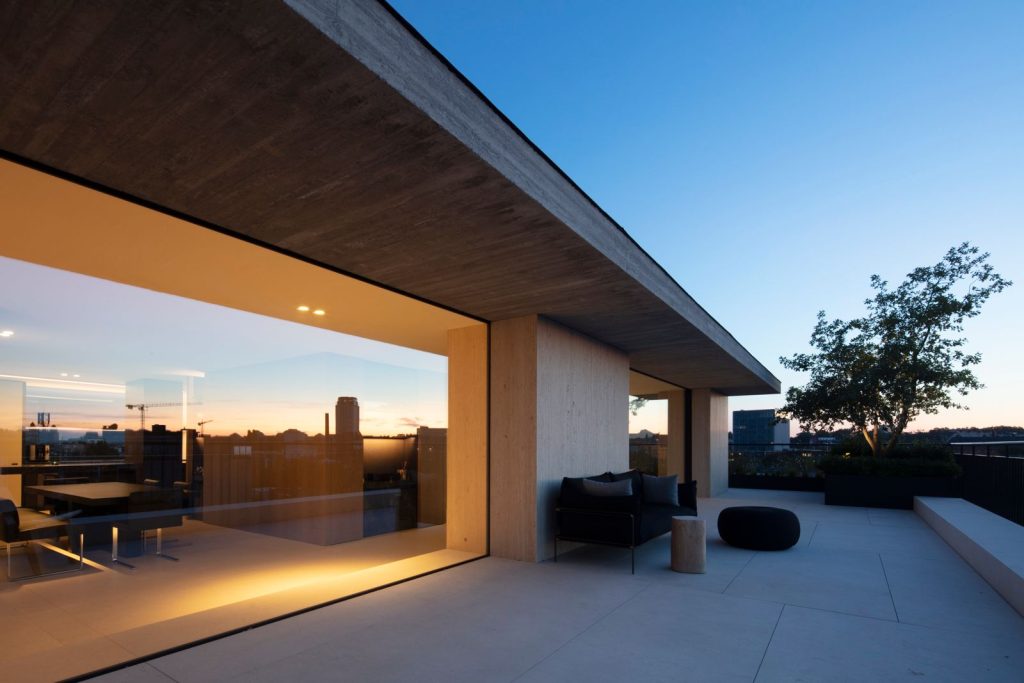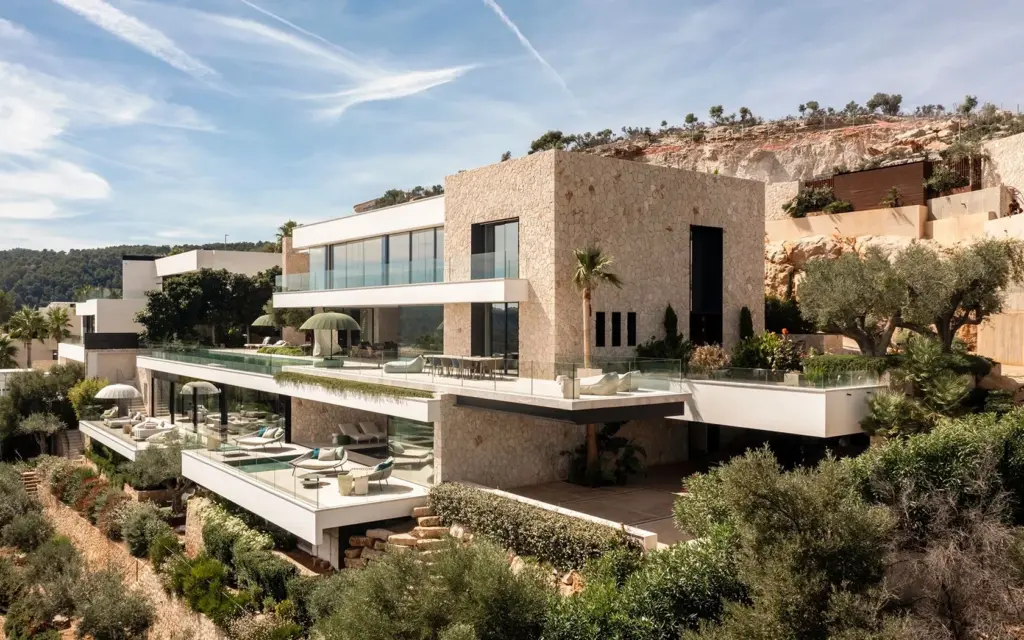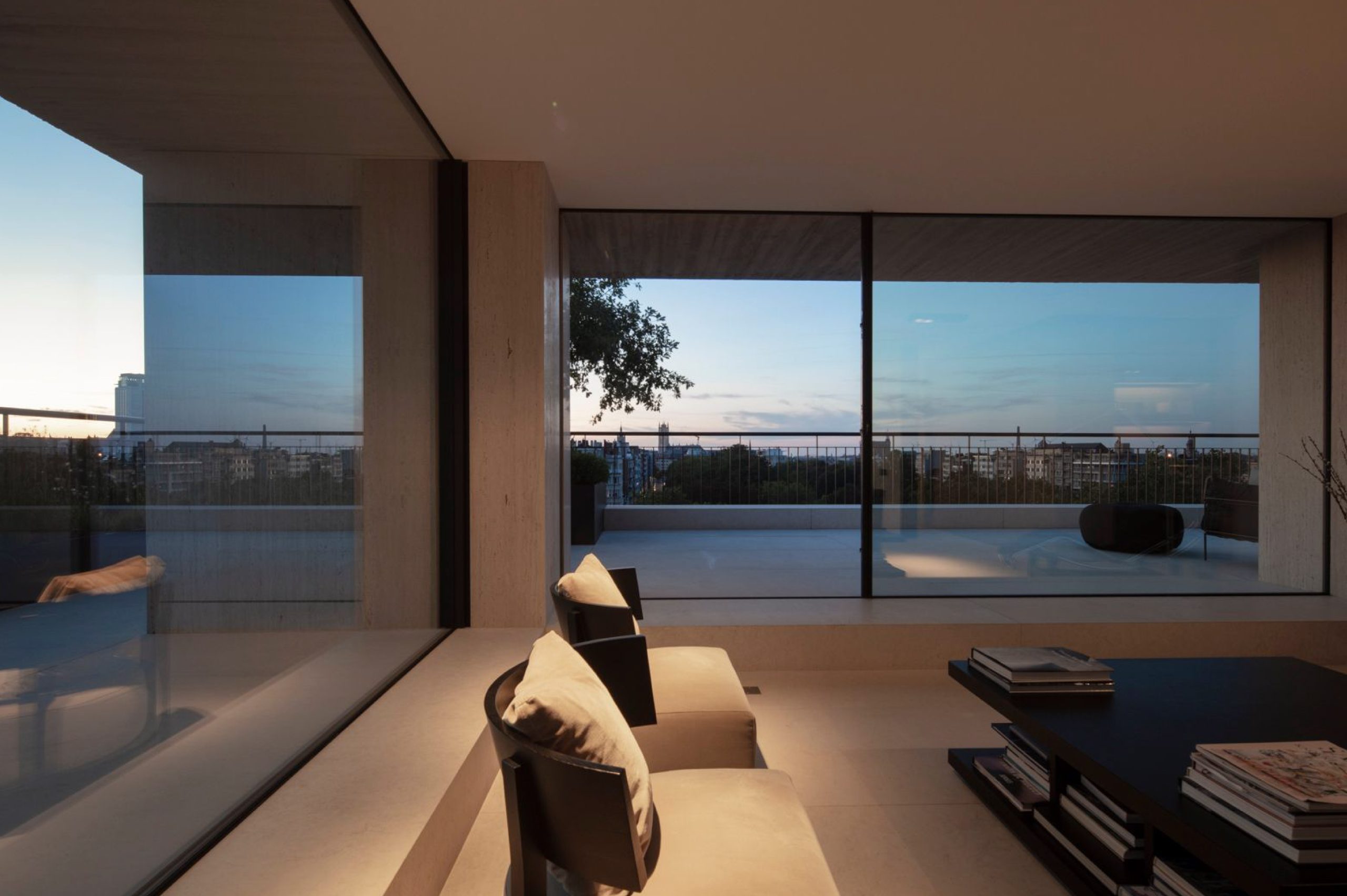Elevated above the urban landscape of Ghent, a private residence by Glenn Sestig Architects reinterprets the interaction between architecture and its atmospheric context. This apartment exemplifies architectural innovation and meditative design, transcending mere functionalism to emphasize the essential.
The architectural language is characterized by clarity, featuring clean lines and monolithic surfaces that establish a sophisticated aesthetic. A minimalist palette comprising travertine walls, smooth concrete ceilings, and soft beige flooring provides a cohesive backdrop for the living spaces. The interiors are fundamentally influenced by natural light rather than ornamental elements, demonstrating a meticulous approach to geometry, proportion, and detail.

Apartment in Ghent | Glenn Sestig Architects | © Tim Van de Velde
Soaring ceiling heights and a pronounced horizontal rhythm afford the apartment a sense of monumental calmness. Every detail, from recessed baseboards to flush thresholds, contributes to a feeling of continuity, ensuring no elements disrupt the seamless flow. The architecture conveys elegance, articulated with clear intention.
Expansive openings utilizing OTIIMA’s CLASSIC sliding system blur the limits between the interior and the terrace. The system’s vertical profiles and extensive glazed surfaces facilitate full-height, wall-to-wall transparency, transforming the façade into a dynamic frame through which the surrounding cityscape is perceived and experienced.

Apartment in Ghent | Glenn Sestig Architects | © Tim Van de Velde
Perhaps his most famous principle, “Less is more,” summarizes Mies’ approach to design: stripping away the unnecessary to reveal the essential. His buildings are characterized by clean lines, open floor plans, and an absence of ornamentation. This philosophy encourages architects to prioritize spatial clarity and material integrity, resulting in modern and enduring structures.

© Tomeu Canyellas
1. Heydar Aliyev Center – Zaha Hadid
1. Heydar Aliyev Center – Zaha Hadid
Sestig’s design intertwines brutalist influences with a tactile material sensibility, where raw concrete coexists harmoniously with refined furnishings. This interplay of light and shadow imbues the space with a dynamic rhythm that evolves throughout the day. A profound equilibrium is achieved between precision and softness, form and void, enclosure and openness.
This project transcends the notion of a mere apartment; it is disciplined in form, yet intimate in its experiential qualities. It presents a study in the elegance of subtraction, whereby each detail is purposefully curated, resulting in an environment where silence reigns, yet nothing occurs by chance.
